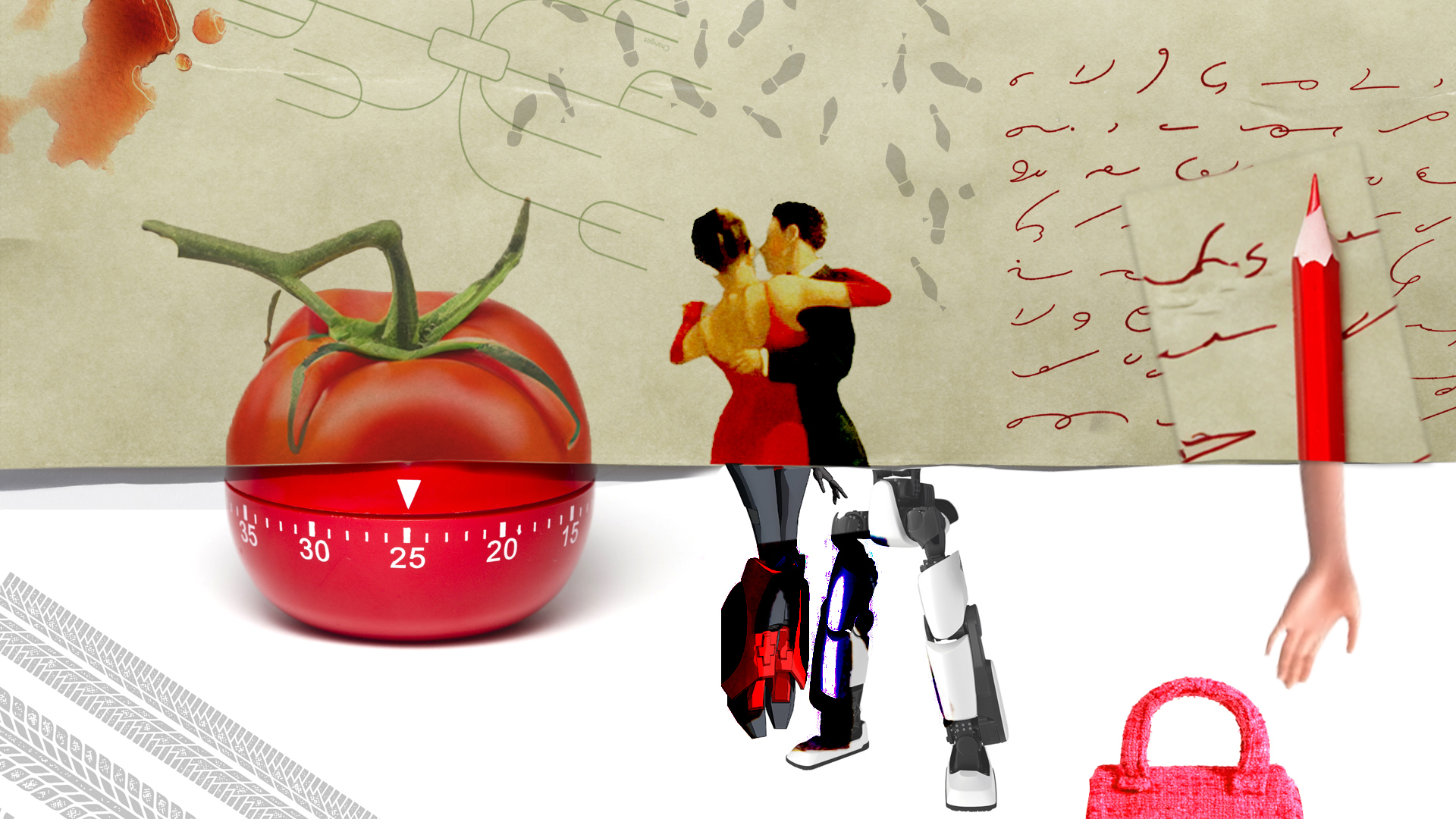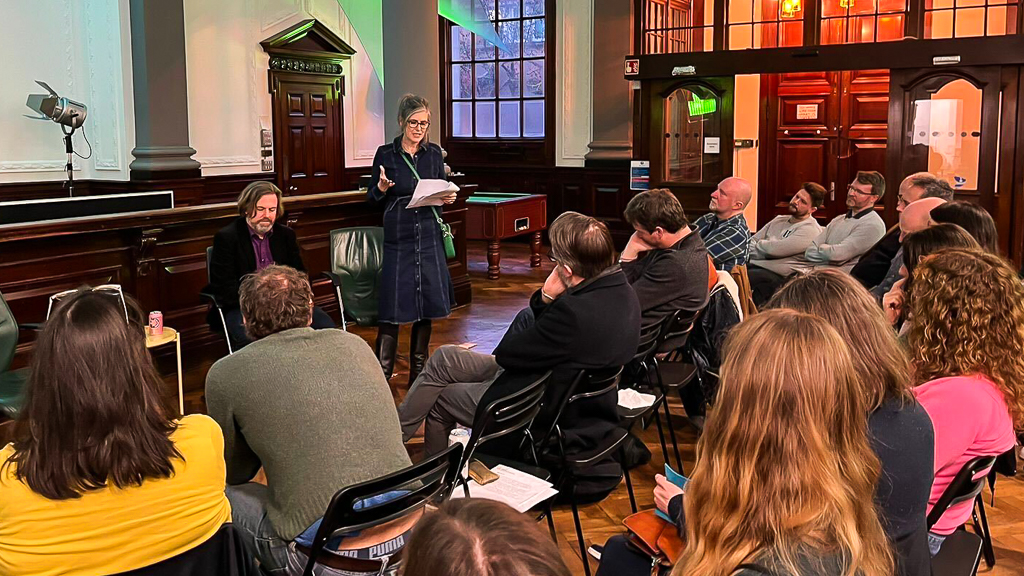It’s very easy to get distracted by technology when we think about the practical, daily application of Generative AI, and lose perspective on the human side of the equation – the upsides of the technology and the cognitive and creative skills that complement its use, and help us get the best from it.
A commonly understood but short term approach to implementing AI in organisations is automation and augmentation. It’s a ‘cheese on-toast’ model, with prebaked-and-sliced AI bots automating junior tasks (or even roles) handing on and upward to humans augmented by GenAI co-pilots. We’re the tasty topping in this metaphor.
It might look appetising at first glance (to a certain kind of myopic manager anyway) until you realise it’s a cul-de-sac for human skills, learning and creativity. The issue is that (…say) a senior business manager develops their acumen, experience, empathy, nuance and creativity in junior roles that automation has now made at least semi-obsolete.
In a recent article for the Harvard Business Review, Christopher Riedl advocates instead for an approach he calls Collective Intelligence. This approach uses Gen AI to enhance any individual’s ability to learn, improve and act on opportunities. At scale, this boosts an entire organisation’s productivity and creativity, sustaining its benefit over the long term. It’s a bit longwinded and complicated to explain in the context of big companies. But we think it’s taken its inspiration not from the corporate world, but the creative one, which is a little easier to get our heads around.
Here’s an example that helps illustrate the core thinking behind Collective Intelligence:
Say Photographer A applies her creativity to edit an image for a stunning result. She offers her technique and workflow to the broader photographic community via a step-by-step reconstruction – of the kind that’s pretty popular in Adobe Lightroom. That asset is recorded quickly and easily using AI. AI also curates it for Photographer B, when it notices similarities in the images he’s about to edit. Photographer B hits ‘play’, learns the new technique and gets a result. Maybe he even improves it a bit – which becomes a new shared workflow. And so on. Creativity becomes a more communal – a collective – process.
Collective Intelligence is the summation of collective memory, collective attention and collective reasoning. Riedl argues that it allows organisations to “target specific areas in which AI can elevate the organisation’s collective cognitive abilities and drive more informed decision-making in ways that are human centred and amplify human creativity.” NVIDIA have put this into practice – which feels pretty apt – using a GenAI chatbot to answer questions about complex chip design using the company’s own continuously nourished and updated knowledge. You can read the full HBR article here.
So when we argued in this article’s original version that GenAI will need a dancing partner for it to do its best work – a curious, creative human with well-ordered thinking – we weren’t far wrong. A year on, we’d state it differently: curious, creative humans can harness GenAI to streamline access to knowledge and tools, and broaden their exposure to new ideas. That means we can do our very best work, and maybe progress the state of the art as well.
As before, here are some complementary human skills that will remain relevant and very useful in the age of AI.
These skills will make you more productive and creative, every day (more ideas to improve creativity in this article, btw). They fit beautifully into the toolset you’ll need as you work to get the best from generative AI. Plus they have either arisen from or been validated by the science of human cognition – the increasing understanding of how our organic intelligence works.
Let’s dive in.
Three creative skills that complement AI
1| The Pomodoro Technique
The Pomodoro Technique has been around since the late 1980s, but I stumbled across it about a decade ago. Productivity tips come and go, but this one has really stuck with me. It’s all about getting your mind in the zone to tackle tasks head on, specifically for me, writing tasks.
The eponymous pomodoro is a tomato shaped kitchen timer. The technique is basically just setting the timer for 25 minutes, and writing without stopping until the timer sounds. It is both super simple and ridiculously useful. After 25 minutes you stop and break for 5 minutes, then go again for another session. Rinse and repeat, making sure you use your last session to write yourself into a cliffhanger, so it’s easy and rewarding to pick up again later.
The arbitrary silliness of using a tomato as a stand-in for units of time belies the Pomodoro Technique’s serious effectiveness when it comes to helping you to crush procrastination and get the words flowing.
"It is both super simple and ridiculously useful."
You can use it to write in any way you like, but for me, its value is multiplied when you use your first 25 minute block to write by hand. There’s something about the coordination between the pen and paper and the brain that is very freeing. You’re less likely to judge your writing if you freestyle it, and that gets you into a productive creative zone.
2| Mindmapping
Think about how to take notes about a bike race (or any kind of race that floats your boat). There’s the start line, and who gets to line up where. There’s the jostling for position in the first kilometres, undoing any false order at the starting grid. At some point, maybe, a group of unfancied racers will attack the main field, attempting to get up the road and out of sight, gambling that the field will underestimate them. Perhaps, come mid way, the serious contenders collaborate to reel in the breakaway. With that accomplished and towards the finish line, that coalition collapses and everyone races for the win.
It makes perfect sense that the story of the race is written traditionally in linear fashion, along a timeline. After all, the race never finishes before it starts.
Now consider something less obviously linear – a creative ideas session. Organising notes along a timeline makes no sense here, because ideas are proposed, then evaluated in more depth, and always spawn related ideas. It’s much more useful to record the essence of those ideas and how they relate to each other.
So instead of notes, create a picture that captures those ideas and their relationships. Ignore time – it’s not even slightly relevant. You’ll find you don’t need many words, and doodles can work just as well. Think of any road map – it doesn’t need a description to say that ‘the M4 Motorway links Cardiff, Wales to London, England’. The relationship is right there, in the map.
"It’s a creative activity which can actually feed your ideation process."
When you create a mindmap, you have more time for active listening. And mindmaps mirror how the brain likes to organise information – grouped by relatedness and accented with imagery. So as you create a mindmap, you’re also ordering your thinking and actively creating new relationships between facts and ideas.
It’s easy to learn. It’s truly liberating. Plus it’s a creative activity – not admin – which can actually feed your ideation process. A live mindmap ( whiteboarded, or try one of the hundreds of excellent apps ) is a fascinating, positive feedback loop, and the other folks will think you’re really smart!
3| Shorthand
In the age when every phone has a voice recorder, and AI can transcribe interviews for you without having to lift a finger, why would any journalism student still learn shorthand? Yet, many still try to master this not-so-widespread skill.
But why? The answer, I believe, is a lot more nuanced than ‘just because it’s a requirement’.
Of course, the main reason is that there is practicality in knowing how to write shorthand. It gives you the superpower of quick note taking, without needing a keyboard. Just a pen and paper. Anywhere, anytime. It also requires a lot less space than regular handwriting.
Apart from it being useful professionally, it also has a variety of personal uses. Some people say they like it because they can decode their notes, others say it feels like knowing a foreign language. It also reminds me of the times my best friend and I created our own secret alphabet so we could send each other letters only we could read.
"It gives you the superpower of quick note taking. Anywhere, anytime."
Then there is curiosity. There’s something exciting about having a skill not that many people have anymore.
The last – but just as important of a reason for me – was the challenge of exercising my brain a little. Technology can record and write and find anything for us. Yes, it is great and useful, but I know I’m not the only one who sometimes feels like they stopped thinking in the midst of all this automation. Listening carefully, using a system of letters and rules to note down words, then transcribing it, all lets me use my brain in a more active way than recording or even typing ever could. Not to mention, writing notes by hand is proven to help with memorization, and trains reading and language processing skills.
Getting started is not easy, and reaching the 100 words per minute goal is even harder. People will tell you it’s difficult, challenging, troublesome, and will top it off with saying how many just give up halfway. What becomes clear right at the start is that those who persist need to be dedicated, stubborn, and maybe a bit crazy, even.
But at the end – despite the difficulty – most people will also tell you ‘it’s worth it and you should do it anyways’.
Last thoughts
This dance between human and artificial intelligences is only going to get more interesting, intricate and intimate. Since the first days of Siri and Alexa we’ve been exploring AI’s sometimes baffling foibles, but also its ability to surprise and delight. And AI – in quite narrow applications maybe – has been learning to be more like us. But it’s the complementarity that’s maybe most appealing.
We’ll explore this some more in future articles. It would be great to hear your experience, insights and thinking, by the way. Leave us a comment below or reach out on purpose@wearecohesive.com







What do you think?